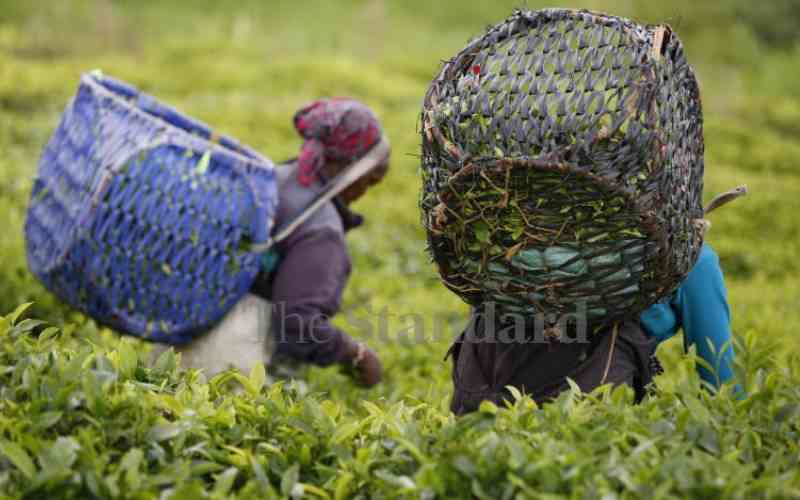NAIROBI: When the 2015 Kenya Certificate of Primary Examination (KCPE) results were announced, there was nationwide pomp and jubilation
As usual, focus was on those schools and pupils who had performed well. The determinants of performance by the pupils are numerous and varied.
Some of the pupils have been disadvantaged by the dilapidated infrastructure, teacher shortage, absenteeism, demotivation in their schools and inequalities within the counties.
The Uwezo Kenya learning assessment reports, have consistently shown that pupils in more developed counties perform slightly better than their counterparts in marginalised counties.
According to the latest Uwezo report, only 14, 13 and 10 per cent of the Standard Three pupils in Turkana, Samburu and Mandera can competently do Standard Two numeracy and literacy work.
The situation is different in Nyeri, Kajiado and Nairobi, where 58, 54 and 52 per cent of the pupils respectively possess Standard Two numeracy and literacy skills.
The obvious denominator in these glaring differences is the income and infrastructural levels of these counties. The Kenya Institute for Public Policy Research and Analysis (KIPPRA) Economic Report 2013 estimates the overall poverty levels in Kajiado, Nairobi and Nyeri Counties at 12, 21 and 31 per cent respectively.
Turkana, Samburu and Mandera registered poverty levels of 93, 78 and 87 per cent respectively in the same report.
The teacher-pupil ratio in Mandera, Samburu, Kajiado and Nairobi counties are around 1:88, 1:47, 1:60 and 1:55 respectively. The high teacher pupil ratio in Mandera impacts on the level of learning.
The Uwezo report further indicates only 10 per cent of the pupils in Standard Three possess requisite numeracy and literacy skills for Standard Two. In the 2015 KCPE results, pupils from Mandera obtained a mean score of 173 and this has been the trend over the years.
The distribution of teachers within the counties is also a challenge. Most of the teachers prefer to work in the major towns and trading centres. This has led to teacher shortage in far-flung and “hostile” areas.
Last year, there was mass exodus of teachers from the Northern part of Kenya due to uncertainty over security. Children in the arid and semi-arid areas walk for longer distances, averaging over 10 kilometres, to reach school. They have to contend with the wild animals, occasional insecurity fears, famine, droughts and other natural calamities.
Access to water for them is often a luxury and the unavailability of schooling learning inputs places them at a disadvantage. Yet, children from these areas are expected to sit for the same national examination with their counterparts in urban areas who have abundance of learning materials and resources.
The number of out-of-school children in the arid areas is high. The Uwezo report indicates Marsabit and Turkana counties have 32 and 40 per cent of children aged 6-13 years who are out of school respectively.
In Murang'a and Nyeri counties, only 1 and 2 per cent of children are not in school respectively.
The glaring geographical and structural inequalities obviously hinder against our desired achievement of the ratified Sustainable Development Goals (SDGs) and our own Vision 2030.
They are a serious threat to development, both at the national and county levels.
As we begin the year 2016, it is imperative that the national government and the counties come up with policies that will level such inequalities and thus accelerate the development agenda.
 The Standard Group Plc is a multi-media organization with investments in media
platforms spanning newspaper print operations, television, radio broadcasting,
digital and online services. The Standard Group is recognized as a leading
multi-media house in Kenya with a key influence in matters of national and
international interest.
The Standard Group Plc is a multi-media organization with investments in media
platforms spanning newspaper print operations, television, radio broadcasting,
digital and online services. The Standard Group is recognized as a leading
multi-media house in Kenya with a key influence in matters of national and
international interest.
 The Standard Group Plc is a multi-media organization with investments in media
platforms spanning newspaper print operations, television, radio broadcasting,
digital and online services. The Standard Group is recognized as a leading
multi-media house in Kenya with a key influence in matters of national and
international interest.
The Standard Group Plc is a multi-media organization with investments in media
platforms spanning newspaper print operations, television, radio broadcasting,
digital and online services. The Standard Group is recognized as a leading
multi-media house in Kenya with a key influence in matters of national and
international interest.









